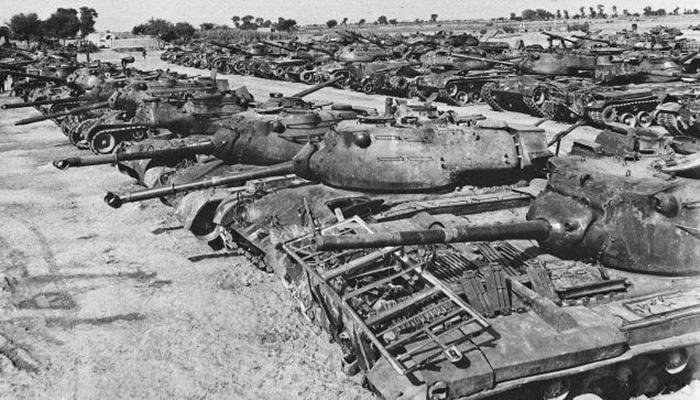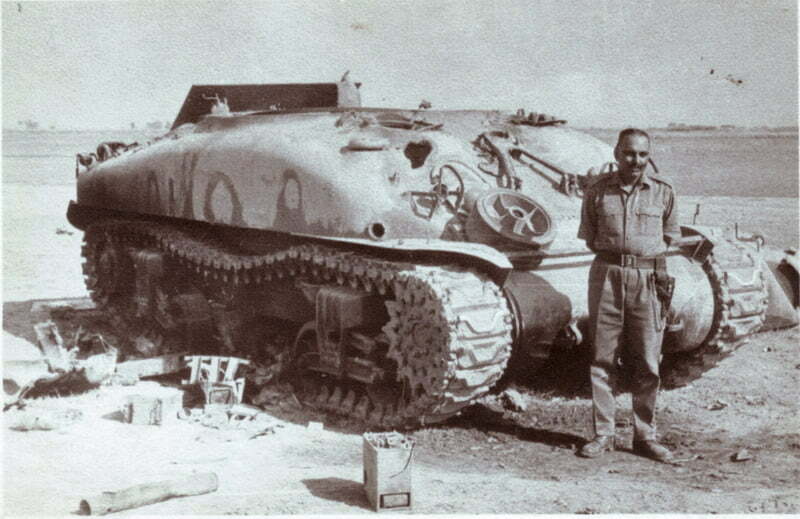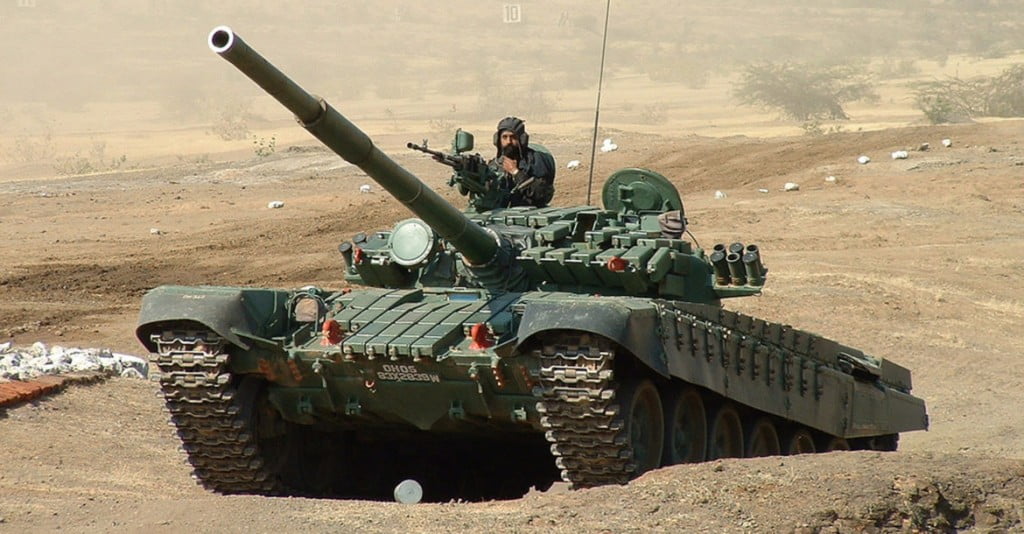
As the Army chief General M.M. Naravane was quoted as saying, “India needs to prepare for the war of the future rather than just for tomorrow.”
Wars in future will not just be fought by the infantry but may involve effective use of force and mobility to knock-out the enemy without giving it a chance to stand up and fight. It will be the age of cyber warfare, artificial intelligence, drones, attack helicopters, unmanned aerial vehicles (UAVs), rockets, hypersonic missiles and man-portable air defence systems.
But it will be too early to write-off the battle tanks as a thing of the past. Tanks have been, and will remain one of the ultimate weapons of victory. There are generally three types of tanks: heavy, medium, and light – each has a specific role.
The heavy tanks are useful against built-up fortifications and bunkers, medium tanks are useful for firepower, protection, and mobility while light tanks are good for exploiting the breakthrough in the enemy defences besides pulverizing the enemy’s mechanized infantry and light armored vehicles. In many armies of the world heavy weight tanks are gradually disappearing because of the perception that they’re too slow, expensive, and easy to spot and kill on the battlefield.
But it is too early to write off the “light tanks” which can be dropped out of airplanes, and fire missiles that can hit targets up to five miles away. With technology now permitting and evolution of next generation light tanks in the battle space, it’s time to review our ‘one size fits all’ strategy. The need of the hour is to have a mix of medium and light tanks to meet emerging threats and generate future capability to fight the next war differently.
While we continue to deliberate, we see the resurgence of state of art Light Tanks world over, including the threat from Chinese Light Tank ZTPQ recently deployed opposite our northern borders in Tibet. It’s time we stop discussing and start acting, building up on our experience of the past and the operational necessity of the future. Let us not forget given the same borders and foe, the light tanks did us proud and emerged victorious, even when we had medium tanks as part of our inventory.
LESSONS FROM HISTORY

While history is a place of reference not residence, its lessons as relevant to future wars need to be imbibed by a professional Army. History is a testimony of Light Tanks doing the nation proud. In the Indian context, light tanks (Stuarts and Shermans) of the 254 Indian Tank Brigade in the World War II at Kohima successfully stalled the ingress of the Japanese Army. This has been described as one of the bloodiest battles in history surpassing the famous ‘Battle of Waterloo’.
Soon after independence in the first Indo-Pak War of 1947-48, the bold and innovative employment of Stuart Light Tanks at unimaginable 11,575 feet high Zoji La pass pushed back the shocked Pakistani invaders and saved Ladakh. Light tanks were also employed in Rajouri during the same period.

Later in the Indo-China 1962 conflict, AMX-13 Light Tank were airlifted by an AN -12 aircraft and gallantly fought alongside infantry in the famous ‘Battle of Gurung Hill’. Also, in the Eastern Sector, the light tanks were employed in Bomdi la and Darrang. Again in 1965 Indo-Pak war, the AMX-13 tanks were deployed at Nathu La.

In 1971 Indo- Pak conflict, both AMX-13 and the amphibious PT-76 Light Tanks played a major role in the liberation of Bangladesh spear heading the advance through marginal terrain. A squadron of Indian PT 76 in one swoop completely destroyed the Pakistani Squadron consisting of 14 American made M-24 Chaffee tanks and mauled two infantry battalion of Pakistan in the famous battle of Garibpur. Indeed, a decisive blow which created a sense of psychological despondency and physical paralysis leading to the surrender of Pakistani forces.
There are a number of lessons we can learn from these conflicts:
- Light tanks enjoy enhanced strategic, operational and tactical mobility for rapid deployment in inaccessible areas and where medium tanks movement is impeded
- Development of punitive deterrence based capability on the Western Front and dissuasive deterrence capability on the Northern Front mandates a mix of medium tanks and light tanks.
- Given our operational matrix and capability development, light tanks will be a force multiplier and a game changer in high altitude / marginal terrain in the Indian context.
- 4GW environment and Hybrid Wars will mandate agile and deployable mobile protected firepower best executed by an agile light tank as part of a combined arms team.
- In today’s security paradigm, as India finds its rightful trajectory in the comity of nations , role of light tanks for strategic out of area contingencies(OOAC) and security of our island territories as part of a Rapid Deployment Force will seek ascendancy.
EMPLOYMENT PERSPECTIVE
India’s security paradigm entails multi-spectrum, multi-front and diverse terrain challenges at short notice. In particular the threat trajectory is likely to take ascendancy on our Northern Borders and future limited wars, being fought in the mountains and marginal terrains. Deterrence and coercive diplomacy will thus need to be empowered through combat ready and credible rapid deployable forces.  Towards this end the Indian Army restructuring initiative aims to generate lean, agile, versatile and technology enabled Integrated Battle Groups. The equipment profile of mechanized Forces must accordingly have the right mix of medium and light tanks to generate greater operational options and versatility in future wars. The reintroduction of light tanks would permit it to be air deployability, move on tracks or wheels across mountain passes / low classification bridges, pass through narrower lanes in built up areas, and wade through marshier / riverine terrain like in Punjab or Rann of Kutch, otherwise impeded by the present medium tanks in inventory.
Towards this end the Indian Army restructuring initiative aims to generate lean, agile, versatile and technology enabled Integrated Battle Groups. The equipment profile of mechanized Forces must accordingly have the right mix of medium and light tanks to generate greater operational options and versatility in future wars. The reintroduction of light tanks would permit it to be air deployability, move on tracks or wheels across mountain passes / low classification bridges, pass through narrower lanes in built up areas, and wade through marshier / riverine terrain like in Punjab or Rann of Kutch, otherwise impeded by the present medium tanks in inventory.
The broad employment concept of light tank thus devolves around its superior mobility (strategic, operational and tactical), versatility, enhanced maneuverability (small turning radius, high power to weight ratio and low nominal ground pressure), and lethal firepower especially high angle fire cum missile firing ability. While strategic mobility advantage of light tank certainly provides strategic flexibility, however its superior agility, ‘power to weight ratio’, and ‘dimensions’, which gives it a major advantage with reference to inter and intra valley movement in high altitude terrain.
Along the Northern Borders, it would augment the defence potential by forward deployment and denial of corridors to enemy. The primary role would essentially be to close in and destroy enemy forces and facilitate the freedom of action by infantry in mountainous or marginal terrain. Its availability would add teeth in limited offensive or quid pro quo operations into enemy territory. The light tanks would not only target the will of the enemy but also enhance capability through pre-emption, dislocation and disruption of enemy forces. Thus, light tanks would add to the dissuasive deterrence posture and war fighting capability in the Northern Front.
Along the Western Borders proliferation of BUA and canals / swamps have restricted mobility corridors for medium tanks. The Rann of Kutch with its low soil bearing capacity also impedes movement of heavier vehicles. A mix of medium and light tanks with amphibious capability and superior tactical agility would thus facilitate the tempo of operations as also serve as potent reconnaissance force in the Western Front. Its innovative application could help in seizing control of time, space and force matrix in war. Light tank would also find its enhanced utility in hybrid wars of the future.

With its air portability and amphibious characteristics, its role as part of Rapid Deployment Force for OOAC as part of an emergency response force, backup armor-deficient airborne troops, amphibious operations for establishing a beachhead and protection of our island territories, would add to our capability matrix. Its utility as part of UN Forces could also find favor and add to the nation’s international stature.
CAPABILITY MATRIX
The light tank must be designed to defeat armor and low flying helicopters, provide fire support to assaulting infantry, destroy strongholds and fortifications and perform reconnaissance and combat security task. The light tank dimensions must be that they do not impede its transportability by rail, road (on tank transporters) and air, as also mobility within the theatre of operations. It must be an amphibious fighting vehicle with capable of day and night operations in both High Altitude mountainous terrain of Northern Borders and plains of Western Front. Its other broad characteristics must entail:-
- LETHALITY. Ability to destroy enemy targets both armored and fortifications at 2000m and possess ATGM missile firing capability up to 4Km both by day and night. High angle firing capability of elevation not less than 17 degrees using a state of art fire control system. Stabilised shoot capability on the move. Secondary armament and AD machine gun with a remote control mount. Its sighting configuration must cater for a “Hunter – Killer” mode.
- MOBILITY AND AGILITY. It must generate a high power to weight ration of minimum 25:1 with steep gradient climb ability. Provide sufficient maneuverability with low NGP and a small turning radius to travel over passes and bridges as obtaining in the Northern Borders, on track (rubber pads)/ wheels. Auxiliary power unit and amphibious capability are essential.
- SURVIVABILITY. Its basic protection must be against small arms and artillery air burst with scalable modular add on armor and option for active protection system for a full combat configuration. Its survivability must essentially be in its low silhouette, advance stealth technology suite, automatic screening system besides NBC protection and fire suppression systems.
It must maintain high operational readiness rates through robust and modular components replacement under field conditions, embedded diagnostics and reduced logistic demand over current armoured systems.
There will always be the issue of fiscal support that comes with increased complexity, as these advanced solutions must be able to operate reliably in all environments and be resilient to all types of threat. However, it is desirable that the cost of Light Tank be lower than a medium category tank for greater acceptability in today’s fiscally constrained environment.
GLOBAL SCAN: LIGHT TANKS
There are a large number of light tanks, both tracked and wheeled, in the inventory of foreign armies. Amongst the more advance are the Russian SPRUT- SDM1, the Chinese ZTQ 105 / Type 15 and the USA Project MPF Light Tank.
WAY FORWARD
A pragmatic and professional analysis is indicative of operational necessity of about 300 plus light tanks including for the payoff in the Northern Borders. Further, to set apprehensions aside, the light tank would not be an accretional to the overall sanctioned strength of armored regiments but a replacement of some of the beyond service life T 72 tanks. The existing GSL (Government Sanction Letter) for over 300 tanks already exists thereby making the process justified and financially prudent with lesser cost of a light tank.
The process often debated offers multiple options for procurement. In the order of priority, it could be through the SP partnership model, a Government to Government deal, a variant of FICV, new project under Make 1 of DPP2016 or a DRDO project.
Given the emergence of Chinese Light Tank threat a reality on our Northern Borders, need for a threat cum capability planning and addressing present tank fleet management criticalities, the need for a light tank is well established. It’s time that the inertia be set aside and tangible actions be taken for a definitive time critical outcome.

